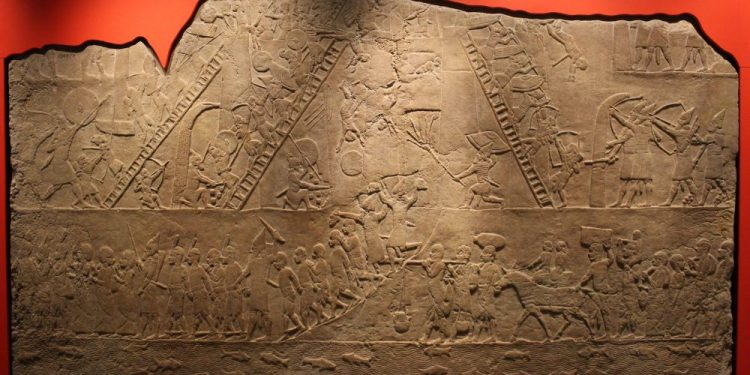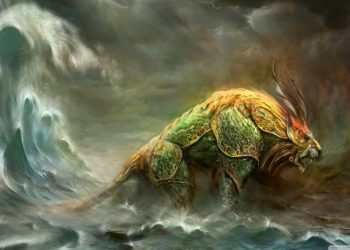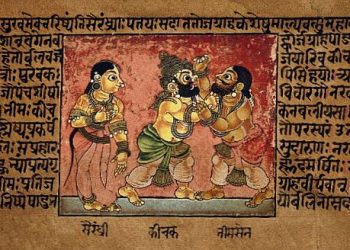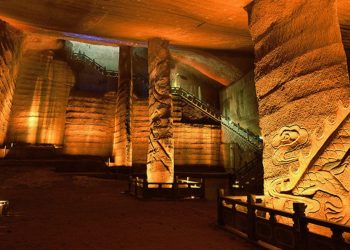“Sumer, the land which came to be known in classical times as Babylonia, consists of the lower half of Mesopotamia, roughly identical with modern Iraq from north of Baghdad to the Persian Gulf. It has an area of approximately 10,000 square miles, somewhat larger than the state of Massachusetts. Its climate is extremely hot and dry, and its soil, left to itself, is arid, wind-swept, and unproductive. The land is flat and river-made, and therefore has no minerals whatever and almost no stone. Except for the huge reeds in the marshes,”
― The Sumerians: Their History, Culture, and Character
The origins of the Sumerian civilization are still debated to this day. Archeological evidence shows that the Sumerian civilization lived in Southern Mesopotamia approximately 4000 BCE, making them one of the oldest civilizations on Earth, although evidence of a pre-formative civilization existed for far longer.
The Sumerian religion was polytheistic; which means they worship multiple deities, and many of them were anthropomorphic– humans form gods.
Lost culture of Sumerian
Sumerians began losing their cultural identity and political force in the region after the war with Amorites and Babylonians 2000 BCE. With time, all their knowledge, technology even name lost meaning and the influence they had over Mesopotamia ceased to exist.
The secrets of their civilization were hidden in the desert of present-day Iraq and remained so until the 19th century when British and Franch archeologists found a series of artifacts while they were investigating signs of ancient Assyrians.
Archaeologists have recovered numerous pieces of Sumerian art, pottery, and sculpture as well as some 500,000 clay tablets, the vast majority of which have still yet to be translated.
Sumerian mathematics
We can trace the origins of a sixty-minute hour and sixty-seconds- minute all the way to ancient Mesopotamia. In modern times, we use mathematics based on the decimal system.
The Sumerians mainly used a sexigesimal structure based around the number 60, and Babylonians later adopted their numerical system. They used a method for astronomical calculations concerning the lengths of the months and the year.
Epic of Gilgamesh
This masterpiece is the most significant achievement of Mesopotamian literature. In this poem, penned down in as many as 3000 lines, the Sumerian king goes on an adventure facing great beasts while on a quest to learn the secrets of eternal life.
In the poem, the Hero is described as a Hercules looking demi-god. At the same time, researchers believe he is actually a king who ruled the ancient city Uruk.
Sumerians and trading
It is known that ancient Mesopotamia had limited access to timber, stones, and minerals. This lack of resources led the Sumerians to create one of the earliest trading networks, both via land and sea.
One of their most significant commercial trading partners was the island Dilmun ( Bahrain today). The Island was well known for copper trade but gold and gemstones were also part of their trading route all the way from Oman and Indus Valley.
One thing the Sumerians loved was Lapis Lazuli- blue colored gemstones used for jewelry and art. There is evidence of merchants traveling as far as Afganistan in search of precious stones.
Sumerian Cuneiform
Cuneiform is a form of writing made on wet clay soil that was later baked and left in the sun to harden.
Sumerians used it around 3400 BC for different purposes including keeping accounts and records of business transactions.
Since the script could be adapted to multiple languages, it was later used throughout several millennia by more than a dozen different cultures.
Archaeologists have found evidence that Near East astronomical texts were still being written in Cuneiform as recently as the first century A.D.
Sumerians and Beer
Sounds funny, but Sumerian loved beer. Although they are known for having invented writing, the wheel, law codes, and literature, they are known to be some of history’s first brewery masters.
Evidence of Mesopotamian beer-brewing dates back to the fourth millennia B.C.
Sumerians used to worship the goddess of brewing called “Ninkasi.”
The brewing technique they used in the past is still a mystery to us. Still, Sumerians prized their Ale beer for its nutritional benefits and labeled it as a key to the “joyful heart and a contented liver.”
War of Sumerian city-state
Sharing the same language, Sumerian city-states were in constant wars, and the result was different dynasties and kingships. The most known conflict was King Eannatum of Lagash, who defeated the rival city-state of Umma. The War started because of a border disagreement around 2450 BC.
During his conquest, he subdued Elam, destroyed Susa’s city and several other cities, and extended his domain to Sumer and Akkad.
During the latter stages of history, King Eannatum was conquered by the Elamites, Akkadians, and Gutians.
Queen Kubaba
One of the most remarkable pieces of information about Mesopotamian history is the famous “King List.” It “s written in Cuneiform, and it showcases the names of the ancient rulers of Sumer as well as the lengths of their reigns.
With all the kings on the list, one ruler was of peculiar interest. It was Sumer Queen Kubaba, the first woman to rule. What’s impressive is the Kubaba wasn’t given trone because of her birthright.
She supposedly took the throne in the city-state of Kish in 2500 B.C.
Very little is known about Kubaba’s reign or how she came to power. Still, the list credits her with making “foundations of Kish” and forging a dynasty that lasted 100 years.
Sumerian cities
Major Sumerian city-states included Eridu, Ur, Nippur, Lagash, and Kish, but one of the oldest and most sprawling was Uruk.
It was a thriving trading hub protected with six miles of defensive walls and a population of between 40,000 and 80,000.
Being one of the first cities of the time, Uruk was the main force of urbanization and state formation.
In a period of 800 years, it saw a shift from small, agricultural villages to a larger urban city with a full-time bureaucracy, military, and developed society.
Sumerian Engineering
Living between the Tigris and Euphrates rivers, the ancient Sumerians learned how to use the overflow of the rivers to water their crops. Discovering the rich silt in the water, they used river water to fertilize the farm fields.
They designed a complex system of canals and dams to regulate the flow of the water. This, in turn, allowed them to develop a sprawling civilization.
Join the discussion and participate in awesome giveaways in our mobile Telegram group. Join Curiosmos on Telegram Today. t.me/Curiosmos
All sources and references are linked throughout the article.











